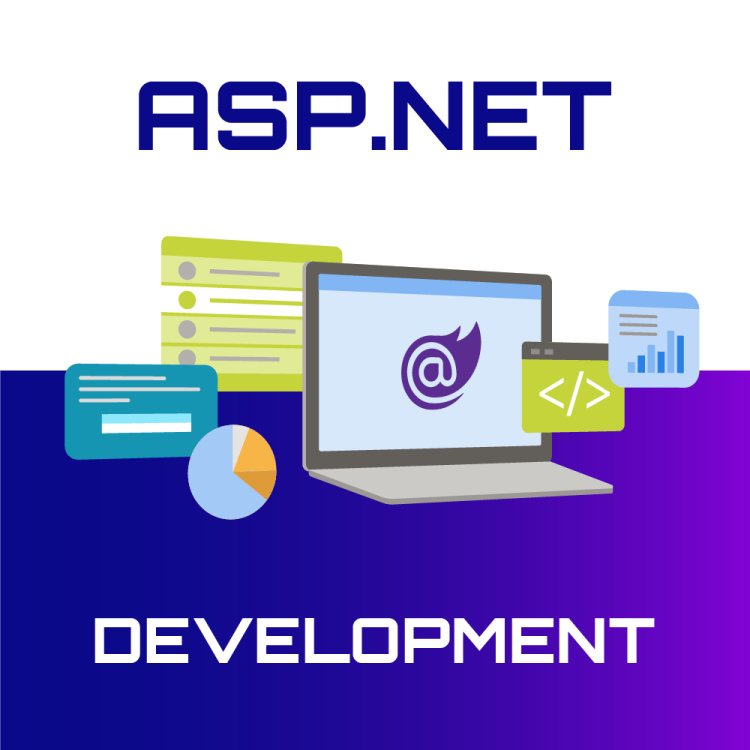Migrating Legacy Applications to ASP.NET: A Step-by-Step Guide
Explore the process of migrating legacy applications to ASP.NET in this comprehensive guide. Learn the step-by-step approach, from assessment and planning to deployment, and discover the benefits of partnering with a professional .NET development company to ensure a smooth transition. Explore the process of migrating legacy applications to ASP.NET in this comprehensive guide. Learn the step-by-step approach, from assessment and planning to deployment, and discover the benefits of partnering with a professional .NET development company to ensure a smooth transition.

Migrating legacy applications to ASP.NET can be a transformative step for businesses looking to modernize their technology stack. Moving from outdated software to a robust, scalable, and secure framework like ASP.NET offers several benefits, including improved performance, easier maintenance, and enhanced security. However, migration requires careful planning and expertise. Partnering with a .NET development company or deciding to hire .NET developers can make this transition smoother and more efficient.
This guide will take you through a structured approach to migrating legacy applications to ASP.NET, ensuring minimal downtime and maximum effectiveness.
Why Migrate to ASP.NET?
1. Enhanced Performance and Scalability
ASP.NET, especially ASP.NET Core, is optimized for high performance and can handle increased traffic and data loads. It also scales easily, supporting business growth without major overhauls.
2. Cross-Platform Compatibility
ASP.NET Core applications run on multiple platforms, including Windows, macOS, and Linux, which opens up new deployment options and reduces infrastructure costs.
3. Improved Security
With built-in security features such as authentication, authorization, and data protection, ASP.NET is designed to safeguard applications from common vulnerabilities.
4. Future-Proofing
As a widely adopted framework backed by Microsoft, ASP.NET ensures ongoing updates, support, and a large developer community. Migrating to ASP.NET helps businesses future-proof their applications.
Step 1: Assess the Legacy Application
Before diving into migration, it’s essential to thoroughly evaluate the current application.
Key Considerations:
- Technology Stack: Identify the technologies used, such as outdated frameworks or languages.
- Code Quality: Assess code complexity and identify any outdated, redundant, or broken code.
- Dependencies: Examine third-party libraries, databases, and external services.
- Performance Bottlenecks: Analyze current performance and determine areas for improvement.
- User Requirements: Gather user feedback to understand pain points and desired features.
Creating a Migration Plan
A detailed migration plan should outline the project timeline, resource requirements, and potential risks. It should also establish success metrics, such as performance improvements and functionality benchmarks, for post-migration evaluation.
Step 2: Choose the Right ASP.NET Framework
Choosing between ASP.NET Core and ASP.NET MVC will depend on the application’s requirements.
- ASP.NET Core: A lightweight, high-performance framework suitable for modern web apps and cloud-based deployments. It is the preferred choice for cross-platform applications and microservices.
- ASP.NET MVC: A robust framework ideal for applications that require a structured development approach with the Model-View-Controller (MVC) architecture.
Choosing the right framework ensures that your migrated application aligns with your technical and business goals.
Step 3: Plan the Database Migration
Data migration is a crucial part of any application transition. Moving data from a legacy system to a new ASP.NET-compatible database requires careful planning to avoid data loss or corruption.
Database Migration Steps:
- Backup Data: Create a full backup of the existing database before making any changes.
- Data Mapping: Map data structures between the legacy database and the new ASP.NET-compatible database.
- Select a Migration Tool: Use tools like SQL Server Migration Assistant or Entity Framework for seamless data transfer.
- Testing: Run migration scripts in a test environment to verify data integrity and resolve any issues before the final migration.
Data Access Options
For optimal data handling in ASP.NET, you may use Entity Framework (EF) for Object-Relational Mapping (ORM) or Dapper for lightweight data access.
Step 4: Set Up the New ASP.NET Environment
After choosing the framework and finalizing the database migration plan, it’s time to set up the development environment.
Development Environment Essentials:
- IDE: Use Visual Studio or Visual Studio Code for ASP.NET development.
- Configuration: Set up configuration files, such as
appsettings.jsonfor ASP.NET Core, to define environment variables. - Dependencies: Install necessary packages using NuGet Package Manager, which hosts a variety of .NET libraries and frameworks.
- Testing Tools: Integrate testing frameworks like xUnit or NUnit to maintain code quality during migration.
Setting up a local development environment also allows the team to prototype the migrated application and test it in real-time before deployment.
Step 5: Refactor and Rewrite Code
Migrating from a legacy platform to ASP.NET often requires code refactoring and rewriting. This step may include restructuring the application to improve efficiency, eliminate redundant code, and align with ASP.NET standards.
Key Refactoring Steps:
- Modularize Code: Break down monolithic code into smaller, reusable modules.
- Optimize for Performance: Address bottlenecks, such as inefficient algorithms or excessive database calls.
- Update UI/UX: Refresh the front-end, either with Razor pages in ASP.NET MVC or a client-side framework like Blazor.
- Implement ASP.NET Features: Leverage ASP.NET’s in-built features, such as dependency injection and middleware, to enhance functionality.
Refactoring helps align the application with modern coding standards, improving maintainability and performance.
Step 6: Test and Validate
Comprehensive testing is critical to ensure that the migrated application functions as expected and meets user requirements.
Testing Approaches:
- Unit Testing: Test individual units of code for correctness.
- Integration Testing: Validate the integration between components, such as data flow between front-end and back-end.
- Performance Testing: Test the application under various load conditions to ensure it can handle expected traffic.
- User Acceptance Testing (UAT): Involve end-users to verify that the application meets business needs and provides a positive user experience.
Automating test cases using a tool like Selenium or Postman can accelerate testing and increase accuracy.
Step 7: Deploy the Application
Once testing is complete, it’s time to deploy the application in the production environment.
Deployment Steps:
- Select a Hosting Platform: Choose between on-premises servers, cloud providers like Microsoft Azure, or hybrid hosting based on your needs.
- CI/CD Pipeline: Set up a Continuous Integration/Continuous Deployment (CI/CD) pipeline to automate code deployment, using tools such as Azure DevOps or GitHub Actions.
- Database Connection: Ensure the new database is connected properly and that data migration is complete.
- DNS and SSL Configuration: Configure domain settings and enable SSL to secure the application.
ASP.NET’s compatibility with cloud platforms like Azure provides flexibility, scalability, and enhanced security for your application.
Step 8: Monitor and Maintain
After deployment, monitoring the application’s performance and functionality is essential to address any issues that arise in real-time.
Monitoring Tools:
- Application Insights: A tool by Microsoft that provides performance monitoring, error logging, and diagnostics for ASP.NET applications.
- Log Management: Use tools like Serilog or NLog for logging application activity and troubleshooting errors.
- User Feedback: Collect user feedback to identify any functional gaps and continuously improve the application.
Regular maintenance ensures the application remains secure, functional, and up-to-date with business needs and technology advancements.
Key Benefits of Partnering with a .NET Development Company
Migrating a legacy application to ASP.NET can be complex, requiring in-depth knowledge of both the legacy system and ASP.NET. Partnering with a .NET development company provides you with the expertise and resources needed for a smooth transition.
Advantages:
- Technical Expertise: Access to experienced .NET developers who are familiar with the migration process and best practices.
- Reduced Downtime: Minimized disruption to your business operations during migration.
- Cost-Effective: Efficient project execution within budget and on time, saving your organization both time and money.
- Future-Proof Solutions: Ensures the application is built to accommodate future technology and business needs.
Conclusion
Migrating legacy applications to ASP.NET is a strategic move for businesses looking to modernize, improve performance, and enhance security. By following this structured approach—from assessment and planning to deployment and maintenance—you can ensure a smooth transition and maximize the benefits of ASP.NET.
Whether you need a partner in a .NET development company or wish to hire .NET developers, the expertise of professionals can streamline your migration journey, turning your legacy system into robust, modern solutions.

 nidhivijay24
nidhivijay24 














